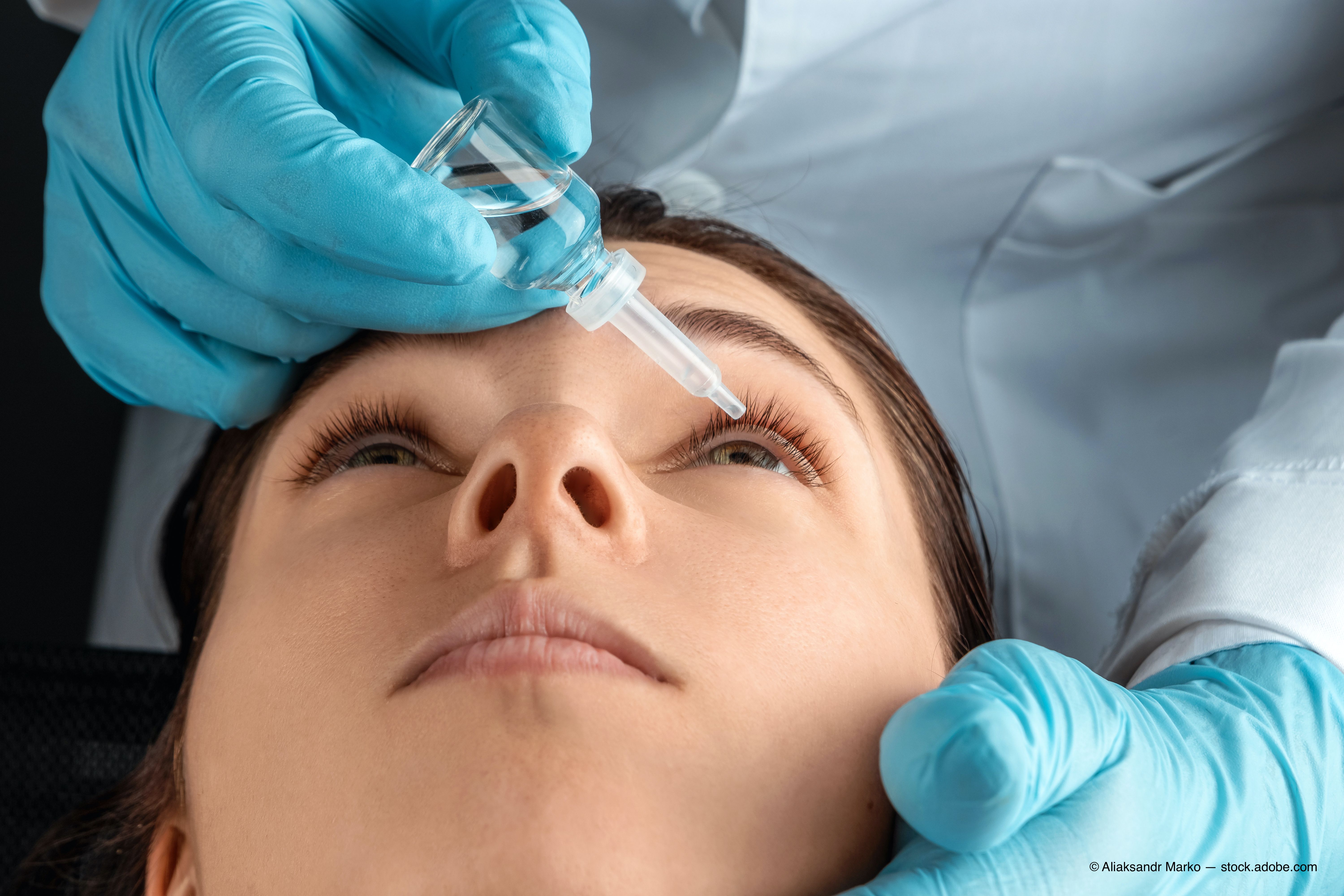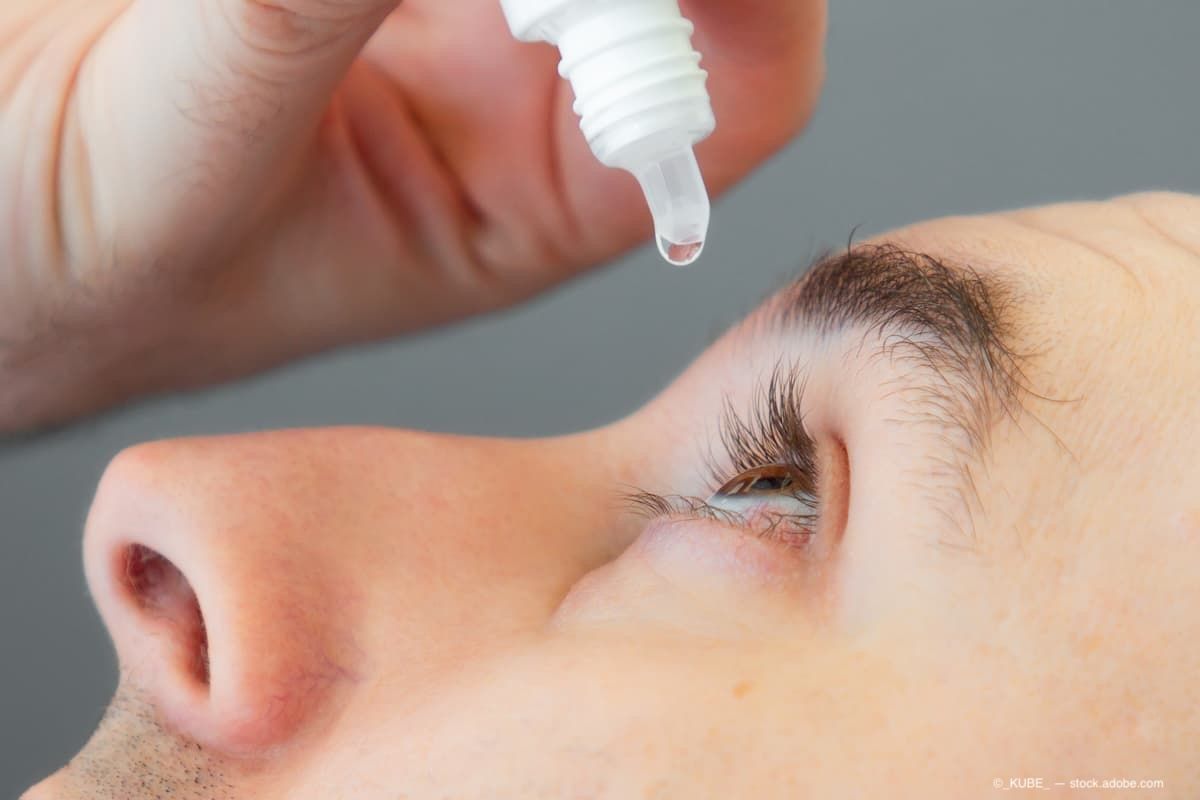News
Article
As cyclosporine options grow, focus remains on the vehicle
Author(s):
Amid a surge in dry eye cases since reopening her practice during the ongoing pandemic, Lisa Nijm, MD, JD, shares how cyclosporine, a well-established form of treatment, poses both challenges and advantages for ophthalmologists.

My clinic is busier than ever managing dry eye, as our already-strong demand for services has swelled in response to patients’ COVID-era screen time, work-from-home arrangements, and elevated stress.
People need help.
Since we re-opened, I have implanted more punctal plugs, prescribed more dry eye medications, and scheduled more in-office dry eye procedures than ever.
Cyclosporine is a well-established stalwart of long-term management for dry eye disease (DED).
Ophthalmologists have trusted it for years as an effective immunomodulator that alleviates dry eye symptoms without major negative side effects.
Related: Making dry eye manageable for patients working from home
Now, we have several options for cyclosporine: Cequa (0.09%, Sun Ophthalmics), Restasis (0.05%, Allergan) and the compounded Klarity-C Drops (0.1%, Imprimis).
Several more are in the pipeline, including generic Restasis, CyclASol (0.1%, Novaliq) and Ikervis (0.1%, Santen Pharmaceutical).
How do we choose?
Although the concentrations range from 0.05% to 0.1%, I have found cyclosporine to be efficacious at all levels, with some subtle differences.
The choice usually comes down to tolerability of the formulation and affordability with patients’ insurance.
Related: Dry eye cases increase in patients with sleep apnea
Vehicles and tolerability
As a topical ophthalmic agent, cyclosporine poses several challenges.
First, it is a hydrophobic, lipophilic molecule, which makes it difficult to penetrate the aqueous layer and reach the eye.
Second, cyclosporine can cause burning or stinging on instillation.
As a result, manufacturers need to formulate a vehicle that achieves the penetration required for efficacy, produces minimal side effects, and feels comfortable for chronic use—a notoriously difficult set of challenges.
Related: New techniques probed for managing dry eye disease
The tolerability of different cyclosporine formulations hinges primarily on the vehicle, which varies among different products.
Although I tend to favor products with an established track record of comfort, some patients might tolerate one better than another. So I offer samples to let them find what works best.
Because I have used Restasis—which has an anionic castor oil-in-water emulsion vehicle1—for many years, I know to expect patients to be comfortable with its long-term use.
As it has been around a long time, Restasis is covered by most insurance plans, making it easier for patients to obtain and resulting in fewer call backs to the office.
My patients also have tolerated Cequa well, which has a nanomicelle-based solution.
Patients can obtain Cequa at its lowest price through a specialty pharmacy, so we check with patients in advance to see if that is a convenient arrangement.
The third current option, Klarity-C Drops, has a chondroitin sulfate, glycerin and dextran-based solution.2
This compounded option can be the most cost-effective choice for some patients.
Related: Lab tear tests aid reimbursements, clinical application of dry eye
However, in my limited experience, it also seems to be the most difficult for patients to tolerate, with more burning and stinging upon instillation than the other options available.
Looking at the pipeline, I do not yet know what vehicle generic cyclosporine will use. But my general concern with generics is always how true they are to the original formulation.
Generics have a window of 80% to 120% similarity, and an unknown variability can mean unpredictable side effects.
Some other cyclosporine formulations in the pipeline have unique vehicles: CyclASol uses a proprietary water-free vehicle called EyeSol that is based on semifluorinated alkane, and Ikervis has a cationic oil-in-water emulsion.
It will be interesting to see the data on efficacy and patients’ comfort using these formulations once they are approved by the FDA.
Related: Myths and misconceptions about autologous serum for dry eye
Prescriptions for long-term management
I use both cyclosporine and lifitegrast (Xiidra, Novartis) as part of long-term management plans for dry eye.
With cyclosporine, my best candidates have chronic dry eye symptoms and possibly wear contact lenses, so they need long-term relief from inflammation.
It can take up to 3 months for cyclosporine to build up the concentration required for full efficacy, so I also choose it for patients who can patiently await some improvement.
In addition, my patients who have dry eye secondary to autoimmune conditions such as Sjogren’s syndrome or rheumatoid arthritis tend to respond very well to cyclosporine.
From a clinical standpoint, it has been great to see more emphasis on dry eye disease result in so many options for long-term treatment.
Whether we get the long-lasting effects of a dry eye procedure, prescribe an immunomodulator or, optimally, offer some combination of both therapies, the options allow ophthalmologists tailor effective, economical, comfortable care to every patient.
About the author
Lisa M. Nijm, MD, JD
Nijm is an ophthalmologist at the Warrenville Eye Care and LASIK, Warrenville, Illinois, and works at the University of Illinois Eye and Ear Infirmary, Chicago, Illinois.
----
References
1. de Oliveira RC, Wilson SE. Practical Guidance for the Use of Cyclosporine Ophthalmic Solutions in the Management of Dry Eye Disease. Clin Ophthalmol. 2019 Jul 1;13:1115-1122.
2. Imprimis. Klarity-C Drops (Cyclosporine 0.1% ophthalmic emulsion PF). (Accessed June 28, 2020: https://www.imprimisrx.com/formulation/kcdrops/)
Newsletter
Don’t miss out—get Ophthalmology Times updates on the latest clinical advancements and expert interviews, straight to your inbox.




